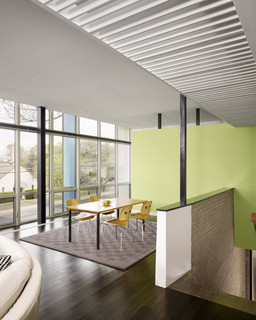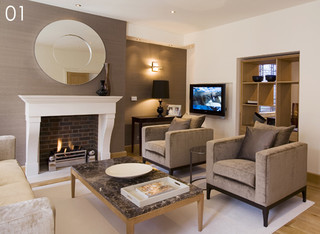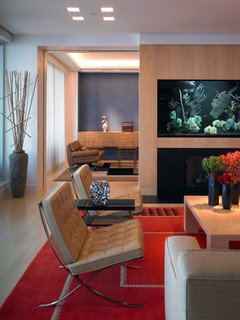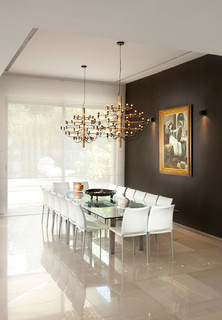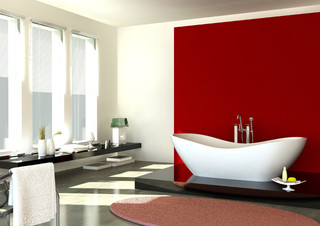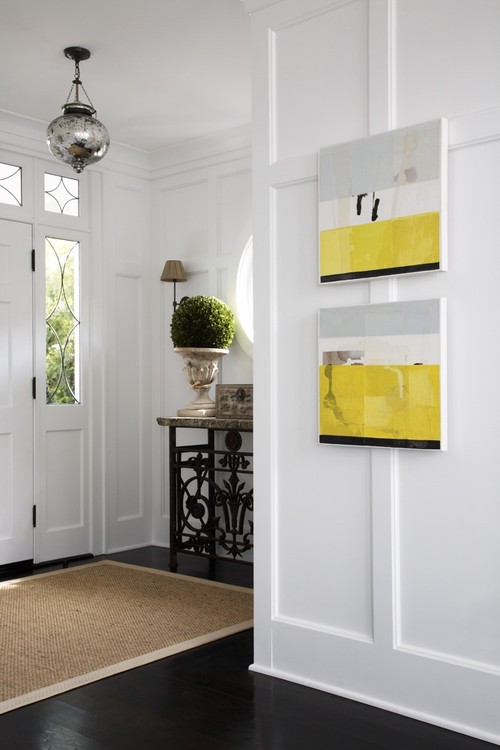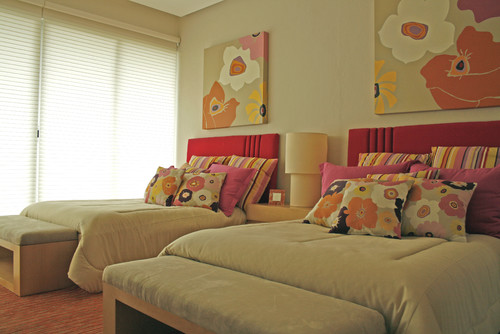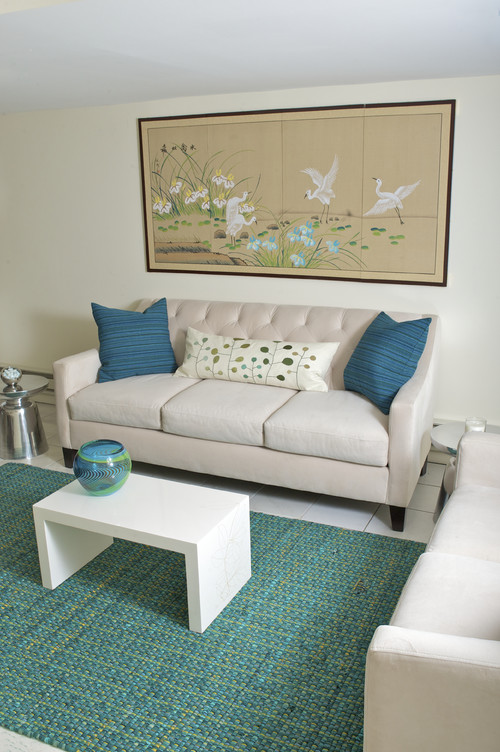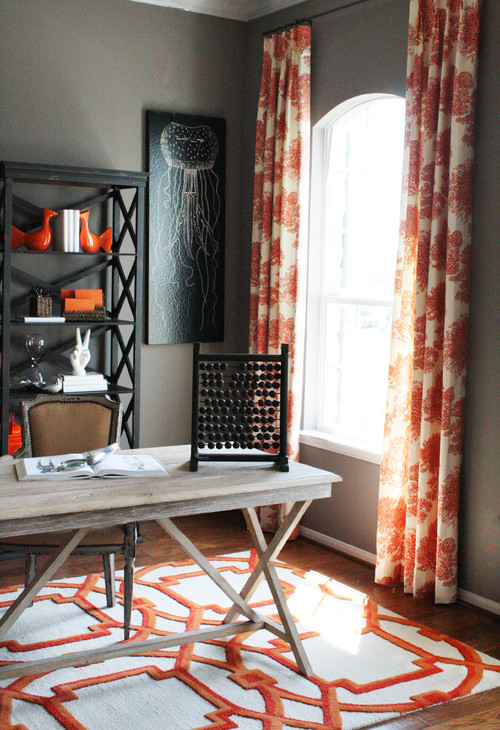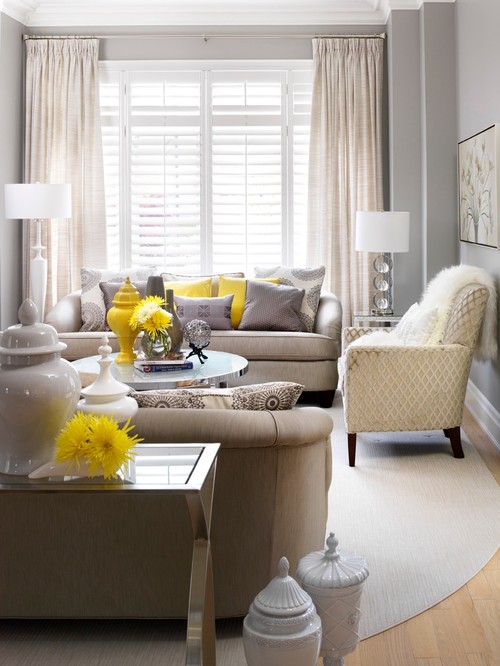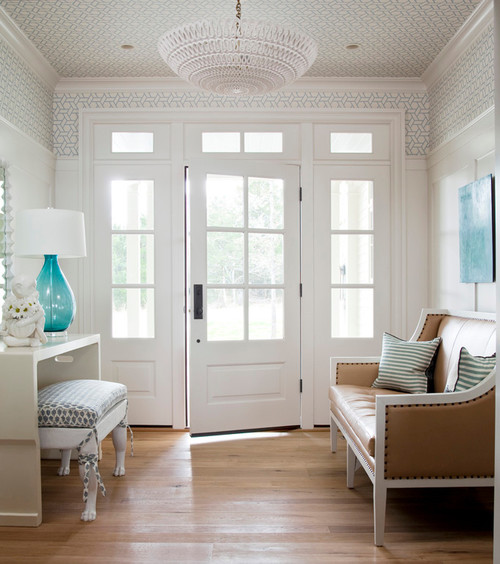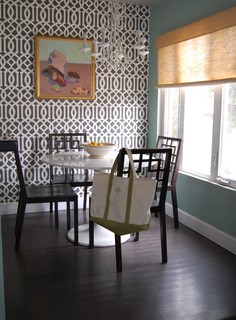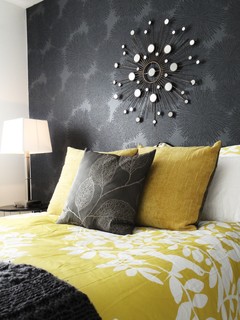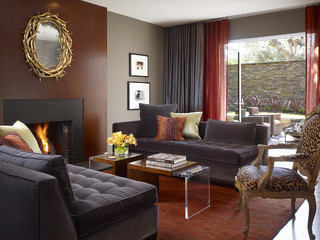Contemporary and modern interiors can lend themselves to accent walls. Personally I'm not a great lover of accent walls except in very specific situations. I do not have any in my own home. I feel there are more subtle ways to make a room inviting and interesting. Accent walls that employ extreme colour contrasts are definitely not one of my loves, unless they are designed very skillfully, they visually unbalance a room especially when the room is small.
When should you think about using an accent wall in a room?
Here are basic guidelines to help you decide if and where you may want an accent wall:
1. To anchor or define a separate area within a larger space especially in open plan homes
refined island designs
The value of the colour of the accent wall is kept in check with the overall look of the room. It isn't jarring but it does help to define the seating area.
2.To highlight a large focal point on or near a wall
The addition of red/rose to the recessed areas of the wall further highlights the fireplace and creates a commanding focal area in a small room. The focal colour is well distributed around the room providing good colour balance.
The lighter taupe colour used to accent the firplace is soft and helps to focus the eye on the fireplace wall without overwhelming the overall quiet tone of this room.
3.To pull a viewer's eye through a room
source
Your eye automatically moves through this space to the opposite wall. The same effect could be achieved with a less intense colour though. Why do so many people automatically use red on accent walls? In small spaces intense warm colours make the wall advance and shrink the space visually when you should be thinking about enlarging it.
In this room your eye is caught by the red area rug initially but the use of the gray blue on the wall in the next room makes the space seem like it is going on forever.
 source
sourceThis is a skillful use of an accent wall to pull the viewer through the room . It also highlight the door and the addition of the vertical metal wall art is perfect for the space. The red also pulls the accent colour through the room.
4. To visually change the proportions of a room - visually enlarge or shrink it
Houzz
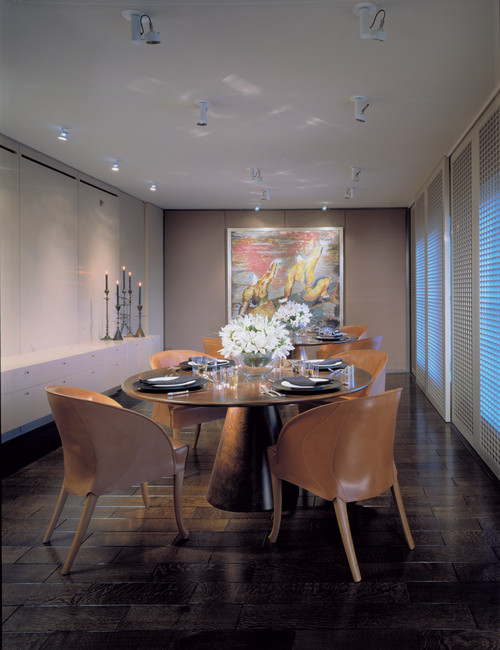
This large space is controlled by the use of the dark accent wall which anchors the space and also provides a backdrop for the dining table.

Long narrow rooms can usually take an accent wall which helps to visually shorten the space. The yellow in the artwork adds to this effect.
5.To provide a backdrop that frames a room's furniture arrangement (typically the first wall you see when you enter a room).
I love everything about this soft and inviting room. The accent wall quietly does it job of focusing the eye and highlighting the minimal furniture arrangement. The three piece of art are a great finishing touch.
Then there are the accent walls that might have been better placed in a room or left out entirely because they cause confusion. As always , this is my humble opinion.
If I were choosing a wall to accent in this room it would not be the back wall because it is not the focal point in the room. Everything points to the fireplace wall including the furniture arrangement. If you felt the far wall needed interest, a large piece of art or an arrangement of art work hung at viewing level would help bring this wall back into the room.
Are you a fan of accent walls?

